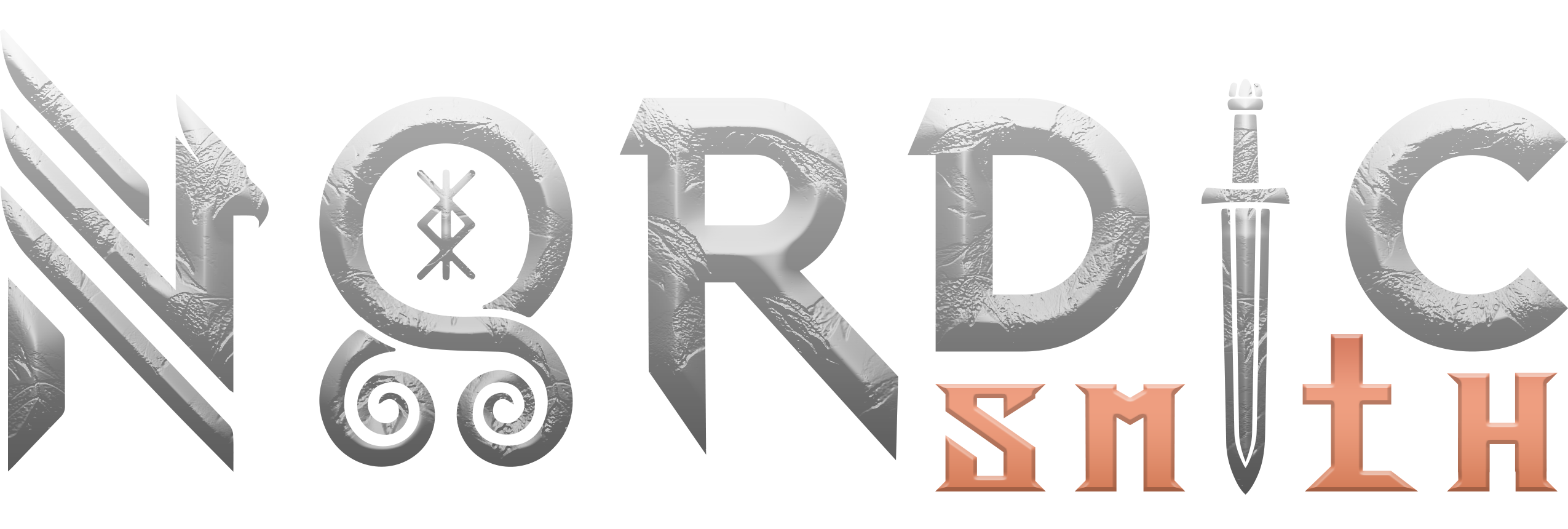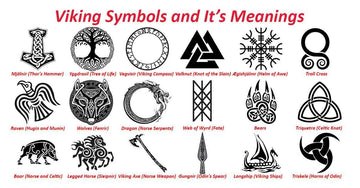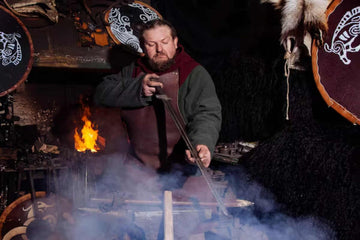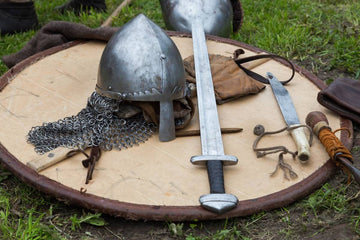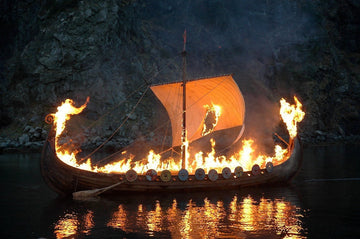How Vikings Reached North America, Russia, and Beyond
The Vikings were not just fierce warriors; they were also skilled navigators, fearless explorers, and ambitious traders. Long before Columbus set sail, Viking explorers had already crossed vast seas, settled in new lands, and established trade routes stretching from North America to the Middle East.
Their legendary voyages took them beyond the known world, shaping history in ways many people don’t realize. In this blog, we will explore how these Norse adventurers expanded their horizons, reaching places such as Vinland (North America), Russia, the Middle East, and even Africa.
1. Viking Navigation: Masters of the Sea
One of the biggest reasons the Vikings could explore so far was their advanced shipbuilding and navigation skills.
- Longships were fast, flexible, and capable of sailing in both oceans and rivers.
- They used sun compasses, landmarks, and even crystals (sunstones) to navigate.
- Experience and oral knowledge helped them map new lands long before modern cartography.
With these skills, Viking explorers ventured into uncharted waters, seeking new lands to conquer, trade with, and settle in.
2. Vinland: Vikings in North America (Leif Erikson's Journey, c. 1000 AD)
Nearly 500 years before Columbus, the Vikings set foot in North America. The legendary Norse explorer Leif Erikson, son of Erik the Red, sailed from Greenland and discovered a land he called Vinland.
How Did the Vikings Discover North America?
- Around 985 AD, Erik the Red established the first Norse settlements in Greenland.
- Inspired by tales of a land to the west, Leif Erikson set sail and reached Vinland (modern-day Newfoundland, Canada).
- The sagas describe Vinland as a fertile land with rich forests, wild grapes, and plenty of fish—perfect for settlement.
Why Didn’t the Vikings Stay in North America?
- The Vikings clashed with indigenous people (whom they called "Skrælings").
- The settlements were too isolated from the rest of the Norse world.
- Harsh winters and limited resources made it difficult to survive.
Despite their short-lived presence, the Vikings were the first Europeans to set foot in North America—a remarkable achievement in exploration history.

3. Vikings in the East: Russia and the Founding of the Rus
The Vikings weren’t just explorers of the Atlantic Ocean—they also expanded eastward into Russia, Ukraine, and beyond.
- These Norse traders and warriors, known as Varangians, traveled along the Dnieper and Volga Rivers.
- They founded major trade cities, including Novgorod and Kiev.
- Over time, they blended with Slavic and Byzantine cultures, eventually forming the foundation of Kievan Rus—the early Russian state.
The Viking explorer Rurik became the first ruler of the Rus in the 9th century, and Norse influence in the region remained strong for centuries.
4. Vikings in the Middle East: Trade with the Islamic World
Many people don’t realize that the Vikings traded as far as Baghdad, interacting with the Islamic Caliphate.
- Viking merchants traveled down the rivers of Russia, reaching the Byzantine Empire and the Arab world.
- They traded furs, slaves, amber, and weapons in exchange for silver, silk, and spices.
- Arabic writers described Vikings as tall, strong, and fierce warriors, often working as mercenaries in foreign armies.
This eastward expansion proved that the Vikings were not just raiders but also major players in global trade networks.
5. Vikings in Africa: Raids and Trade Along the Mediterranean
Viking longships even reached North Africa, raiding and trading along the Mediterranean coast.
- In 859 AD, a Viking fleet attacked cities in Spain, Morocco, and even parts of modern Tunisia.
- They targeted Islamic and Christian coastal settlements, looting gold and valuable goods.
- Some Vikings may have served as mercenaries for Arab rulers, proving their adaptability as both warriors and traders.
Although their presence in Africa was less significant than in Europe and the Americas, it still shows the Vikings’ incredible reach and ambition.
6. The End of Viking Exploration: Why Did They Stop?
By the 11th century, Viking exploration slowed down for several reasons:
- Christianization: Scandinavia adopted Christianity, leading to a shift in priorities.
- Kingdoms and Centralized Power: Viking chieftains became kings, focusing on internal politics rather than exploration.
- Better Defenses in Europe: Many former Viking targets (like England and France) built stronger fortifications, making raids less successful.
- Climate Changes: The Medieval Warm Period ended, making sea voyages and settlements (like Greenland) harder to sustain.
Despite this, the Viking legacy lives on in the lands they discovered, the cultures they influenced, and the fearless spirit they left behind.
Final Thoughts: The Legacy of Viking Exploration
The Vikings were far more than just warriors—they were pioneers of global exploration.
- They discovered North America 500 years before Columbus.
- They founded key cities in Russia and Eastern Europe.
- They traded with the Middle East and North Africa, connecting cultures across continents.
Their courage, skill, and ambition made them one of the greatest seafaring civilizations in history. Even today, their impact can be seen in maps, legends, and historical discoveries.
The Viking Age may have ended, but the spirit of adventure that drove them across the seas will never be forgotten.
